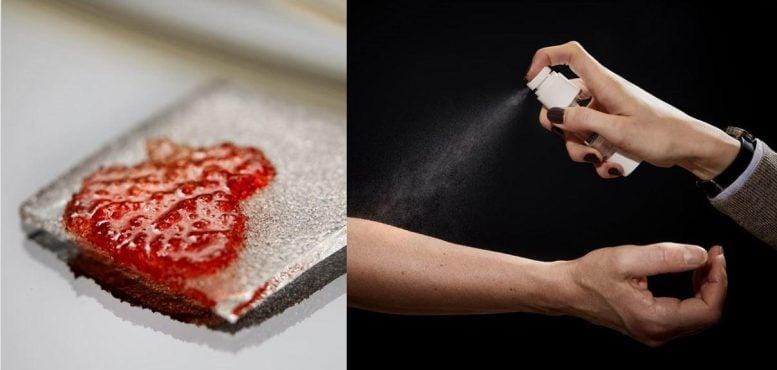
The antibacterial material, with peptides bound to hydrogel particles, works even in contact with body fluids such as blood. It can be sprayed directly into wounds without impairing healing or applied as a coating to catheters and implants to prevent infection, and to fight even multi-resistant bacteria. Credit: Chalmers University of Technology| Anna-Lena Lundqvist
The World Health Organization (WHO) has listed antibiotic resistance as a top ten global health threat, making it imperative to find new ways to combat resistant bacteria and decrease the reliance on antibiotics. In response to this pressing issue, researchers at the Chalmers University of Technology in Sweden have developed a new spray that has the ability to kill even antibiotic-resistant bacteria. This innovative solution can be used for wound care and directly on medical devices such as implants.
“Our innovation can have a dual impact in the fight against antibiotic resistance. The material has been shown to be effective against many different types of bacteria, including those that are resistant to antibiotics, such as Methicillin-resistant Staphylococcus aureus (MRSA), while also having the potential to prevent infections and thus reduce the need for antibiotics,” says Martin Andersson, head of research for the study and professor at the Department of Chemistry and Chemical Engineering at Chalmers.

Martin Andersson, Professor, Department of Chemistry and Chemical Engineering, Chalmers University of Technology. Credit: Chalmers University of Technology| Anna-Lena Lundqvist
It is already estimated that antibiotic-resistant bacteria cause nearly 1.3 million deaths a year worldwide. As part of the effort to slow down the spread and development of drug resistance, researchers at Chalmers are developing a new antibacterial material that can be used in healthcare and become an effective tool to fight antibiotic resistance.
The material consists of small hydrogel particles equipped with a type of peptide that effectively kills and binds bacteria. Attaching the peptides to the particles provides a protective environment and increases the stability of the peptides. This allows them to work together with body fluids such as blood, which otherwise inactivates the peptides, making them difficult to use in healthcare. In previous studies, the researchers showed how the peptides can be used for wound care materials such as wound dressings.
They have now published two new studies in which the bactericidal material is used in the form of a wound spray and as a coating on medical devices that are introduced into our bodies. This new step in the research means that the innovation can be used in more ways and be of even greater benefit in healthcare.
Kills bacteria without adversely affecting wound healing
The wound spray, which can reach into deep wounds and other open areas on the body where bacteria can enter, is flexible and very useful for treating and preventing infection. The new material has many advantages over existing sprays and disinfectants
“The substance in this wound spray is completely non-toxic and does not affect human cells. Unlike existing bactericidal sprays, it does not inhibit the body’s healing process. The materials, which are simply sprayed onto the wound, can also kill the bacteria in a shorter time,” says Edvin Blomstrand, an industrial doctoral student at the Department of Chemistry and Chemical Engineering at Chalmers University of Technology and one of the lead authors of the scientific article.

Edvin Blomstrand, Ph.D. student, Department of Chemistry and Chemical Engineering, Chalmers University of Technology. Credit: Chalmers University of Technology| Anna-Lena Lundqvist
Reduces the risk of infection from materials introduced into the body
For treatments in which materials such as implants and catheters are inserted into our bodies, infections are a major problem. Therefore, there is a great need for new antibacterial biomaterials, i.e. materials that treat, replace or modify organs, tissue, or functions in a biological body. One of the major sources of hospital-acquired infection comes from the usage of urinary catheters. The Chalmers researchers’ new coating can now be an effective new tool for reducing this risk and preventing infections.
“Although the catheters are sterile when unpacked, they can become contaminated with bacteria while they are being introduced into the body, which can lead to infection. One major advantage of this coating is that the bacteria are killed as soon as they come into contact with the surface. Another is that it can be applied to existing products that are already used in healthcare, so it is not necessary to produce new ones,” says Annija Stepulane, a doctoral student at the Department of Chemistry and Chemical Engineering at Chalmers and one of the lead authors of the article.

Annija Stepulane, Ph.D. student, Department of Chemistry and Chemical Engineering, Chalmers University of Technology. Credit: Chalmers University of Technology| Anna-Lena Lundqvist
In the study, the researchers tested the coating on silicone materials used for catheters, but they see opportunities to use it on other biomaterials.
Research in parallel with product development
The research on the antibacterial materials is being conducted in collaboration with the spin-off company Amferia AB, which is also commercializing the technology. Chalmers and Amferia have previously presented the antibacterial material in the form of hydrogel wound dressings, which are presently under clinical investigation for both human and animal wound care.
More about the research and the new materials
The beneficial properties of antimicrobial peptides have been known for many years. They exist in thousands of different variants in the natural immune systems of humans, animals, and plants, and researchers have long sought to mimic and harness the peptides to prevent and treat infections. In their natural state, these peptides are rapidly broken down when they come into contact with body fluids such as blood, which makes their direct clinical use difficult. In the materials the researchers are developing, they have solved this problem by binding the peptides to particles. For both the spray and the coating, they have been able to measure that the bactericidal effect of the materials lasts for up to 48 hours in contact with body fluids and as long as a few years without contact with body fluids.
The researchers have shown that 99.99 percent of bacteria are killed by the material and that the bactericidal capacity is active for approximately 48 hours, enabling its use in a wide range of clinical applications. Since the materials are non-toxic, they can be used directly on or in the body, preventing or curing an infection without adversely affecting the natural healing process.
References: “Cross-linked lyotropic liquid crystal particles functionalized with antimicrobial peptides” by Edvin Blomstrand, Anand K. Rajasekharan, Saba Atefyekta and Martin Andersson, 22 September 2022, International Journal of Pharmaceutics.
DOI: 10.1016/j.ijpharm.2022.122215
“Multifunctional Surface Modification of PDMS for Antibacterial Contact Killing and Drug-Delivery of Polar, Nonpolar, and Amphiphilic Drugs” by Annija Stepulane, Anand Kumar Rajasekharan and Martin Andersson, 2 November 2022, ASC Applied Bio Materials.
DOI: 10.1021/acsabm.2c00705

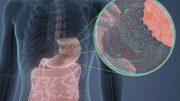
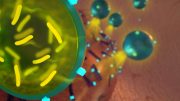

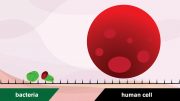
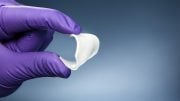
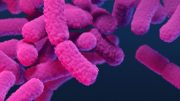
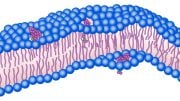
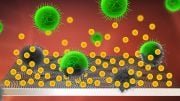
Be the first to comment on "Killing Even Antibiotic-Resistant Bacteria: A New Infection-Fighting Wound Spray"